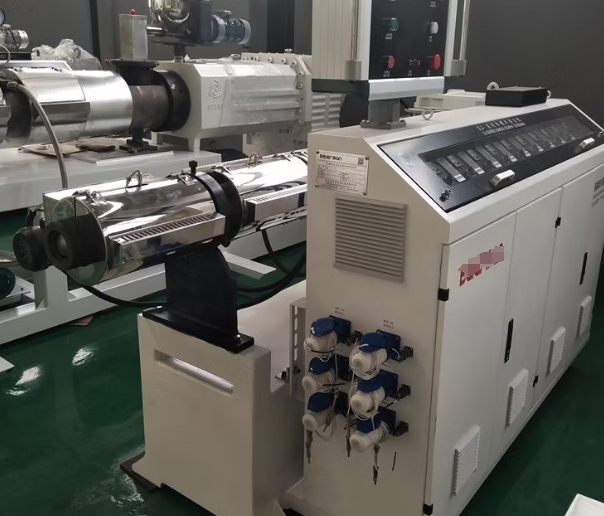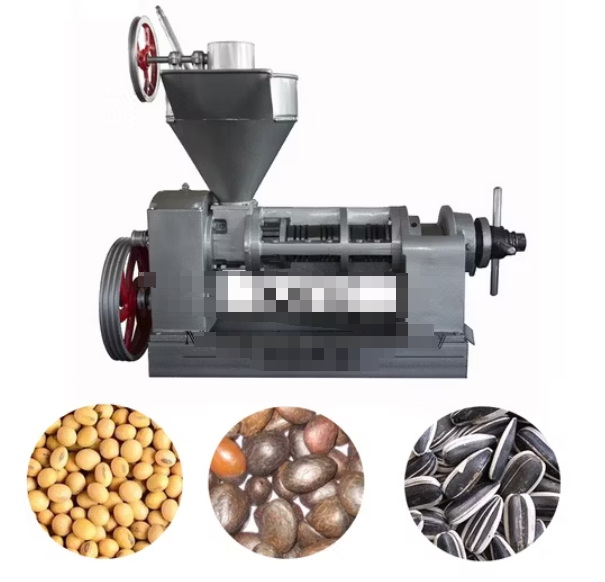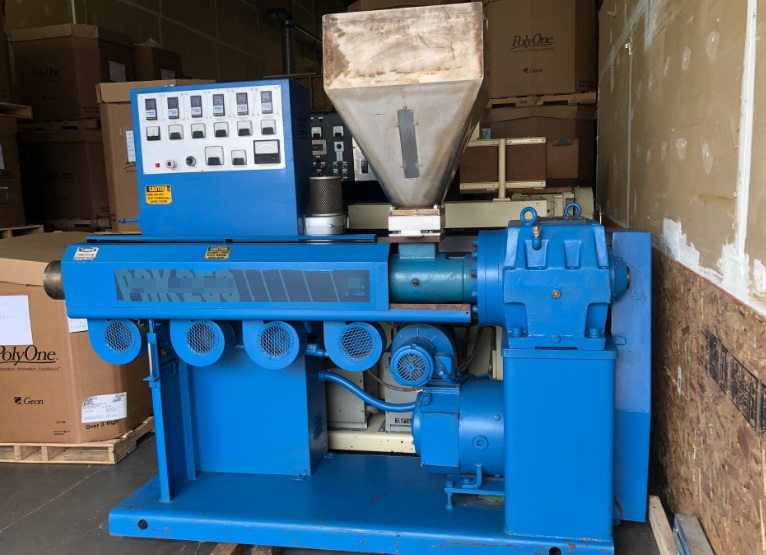Content Menu
● Introduction to Extrusion Film Blowing Machinery
>> Operational Process
● Benefits of Extrusion Film Blowing Machinery
>> Cost-Effectiveness
>> Versatility
>> Customizability
>> Sustainability
● Applications in the Packaging Industry
● Video: Understanding the Blown Film Extrusion Process
● Advancements in Extrusion Film Blowing Machinery
● Future Prospects
● Conclusion
● Frequently Asked Questions
>> 1. What are the main benefits of using extrusion film blowing machinery?
>> 2. How does extrusion film blowing machinery contribute to sustainability?
>> 3. What types of packaging materials can be produced using extrusion film blowing machinery?
>> 4. How does the machinery support customization in packaging?
>> 5. What are some common materials used in extrusion film blowing?
Extrusion film blowing machinery has revolutionized the packaging industry by offering a versatile, cost-effective, and sustainable method for producing high-quality plastic films. This technology is pivotal in creating a wide range of packaging materials used across various sectors, including food, agriculture, and consumer goods. In this article, we will delve into the benefits of extrusion film blowing machinery for the packaging industry, explore its operational process, and discuss its advantages over other manufacturing methods.

Introduction to Extrusion Film Blowing Machinery
Extrusion film blowing machinery, also known as blown film extruders, are specialized machines designed to transform plastic pellets into continuous films. The process involves heating the pellets to a molten state, extruding them through a circular die, and inflating the resulting tube with air to form a bubble. This bubble is then cooled, flattened, and wound into rolls of film, which can be used to produce packaging materials such as plastic bags, wraps, and containers.
Operational Process
1. Melting the Plastic Pellets: The process begins with feeding plastic pellets into a hopper, where they are heated and melted by the extruder's screw. This step is crucial for ensuring uniform melting and mixing of the plastic material. The screw design and temperature control play a significant role in achieving optimal melt quality.
2. Extrusion Through a Circular Die: The molten plastic is then forced through a circular die, forming a tube. Air is introduced into the tube, creating a bubble that expands its diameter. The die design affects the film's thickness and uniformity, making it a critical component in the extrusion process.
3. Cooling and Flattening the Bubble: As the bubble rises, it cools and solidifies. It is then flattened by rollers to create a continuous sheet of film. The cooling process is crucial for determining the film's properties, such as clarity and strength.
4. Winding the Film: The final step involves winding the cooled film into rolls, which are ready for use in packaging applications. The winding process must be carefully controlled to prevent wrinkles or creases that could affect the film's quality.
Benefits of Extrusion Film Blowing Machinery
Cost-Effectiveness
Extrusion film blowing machinery is highly cost-effective due to its ability to produce large quantities of film at a low cost. This efficiency is attributed to the automated nature of the process, which minimizes labor costs and maximizes throughput. Additionally, the machinery can operate continuously, reducing downtime and increasing overall productivity.
Versatility
These machines can work with a wide range of plastic materials, including HDPE, LDPE, and LLDPE, allowing for the creation of films with different properties and applications. This versatility enables manufacturers to produce films tailored to specific packaging needs, such as barrier films for food packaging or durable films for industrial use. The ability to blend different polymers also allows for the creation of films with unique properties, such as enhanced strength or flexibility.
Customizability
Extrusion film blowing machinery can be customized to produce films with specific thicknesses, widths, and colors. This customizability is crucial for meeting the diverse packaging requirements across different industries. For instance, food packaging may require films with specific barrier properties to prevent moisture and oxygen from reaching the contents, while agricultural packaging may need thicker, more durable films to withstand outdoor conditions.
Sustainability
The process is environmentally friendly due to its low waste generation and the ability to incorporate recycled materials. This makes it an attractive option for companies seeking sustainable packaging solutions. The use of recycled plastics not only reduces the amount of waste sent to landfills but also conserves natural resources by reducing the need for virgin materials.

Applications in the Packaging Industry
Extrusion film blowing machinery is widely used in various sectors of the packaging industry:
- Food Packaging: Barrier films produced by blown film extrusion are essential for extending shelf life and maintaining freshness. These films are used in packaging fruits, vegetables, and dairy products. The barrier properties prevent moisture and oxygen from entering the package, thereby preserving the quality of the food.
- Agriculture: Three-layer blown film extrusion lines are used for producing agricultural seed packaging films, offering high durability and resistance to wear. These films must withstand harsh outdoor conditions, including sunlight and moisture, making their durability critical.
- Consumer Goods: The machinery is used to produce packaging materials for consumer goods, such as garment bags and industrial packaging films. These films are designed to protect products during transportation and storage, ensuring they reach consumers in good condition.
Video: Understanding the Blown Film Extrusion Process
To better understand how extrusion film blowing machinery works, consider watching a video that demonstrates the process step-by-step. This visual aid can provide a clearer insight into the machinery's operation and the various stages involved in producing plastic films.
Advancements in Extrusion Film Blowing Machinery
Recent advancements in extrusion film blowing machinery have focused on improving efficiency, sustainability, and product quality. These include:
- Energy Efficiency: Modern machines are designed to consume less energy while maintaining or increasing production capacity. This not only reduces operational costs but also minimizes the environmental impact of the manufacturing process.
- Advanced Materials: The development of new plastic materials and additives has expanded the range of properties that can be achieved in extruded films. For example, biodegradable plastics and nanomaterials are being explored for their potential to enhance film performance and sustainability.
- Automation and Control Systems: The integration of advanced automation and control systems allows for precise control over the extrusion process, ensuring consistent film quality and reducing waste. These systems can monitor parameters such as temperature, pressure, and film thickness in real-time, enabling quick adjustments to maintain optimal conditions.
Future Prospects
As the packaging industry continues to evolve, extrusion film blowing machinery is likely to play an increasingly important role. The demand for sustainable packaging solutions is driving innovation in this field, with manufacturers focusing on developing films that are not only functional but also environmentally friendly. The integration of recycled materials and bioplastics into the extrusion process is expected to become more prevalent, reducing the industry's carbon footprint and reliance on non-renewable resources.
Conclusion
Extrusion film blowing machinery plays a vital role in the packaging industry by providing a cost-effective, versatile, and sustainable method for producing high-quality plastic films. Its ability to customize film properties and reduce waste makes it an essential tool for meeting the diverse packaging needs of various sectors. As the demand for sustainable packaging solutions continues to grow, the importance of extrusion film blowing machinery will only increase.

Frequently Asked Questions
1. What are the main benefits of using extrusion film blowing machinery?
- Cost-effectiveness: Produces large quantities at a low cost.
- Versatility: Works with various plastic materials.
- Customizability: Allows for specific film properties.
- Sustainability: Low waste and use of recycled materials.
2. How does extrusion film blowing machinery contribute to sustainability?
- It reduces waste by minimizing scrap during production.
- It allows the use of recycled materials, reducing the need for virgin plastics.
3. What types of packaging materials can be produced using extrusion film blowing machinery?
- Barrier films for food packaging.
- Durable films for industrial use.
- Films for agricultural seed packaging.
4. How does the machinery support customization in packaging?
- It allows for adjustments in film thickness, width, and color.
- It can incorporate additives for specific properties like puncture resistance or UV protection.
5. What are some common materials used in extrusion film blowing?
- HDPE (High-Density Polyethylene).
- LDPE (Low-Density Polyethylene).
- LLDPE (Linear Low-Density Polyethylene).






















